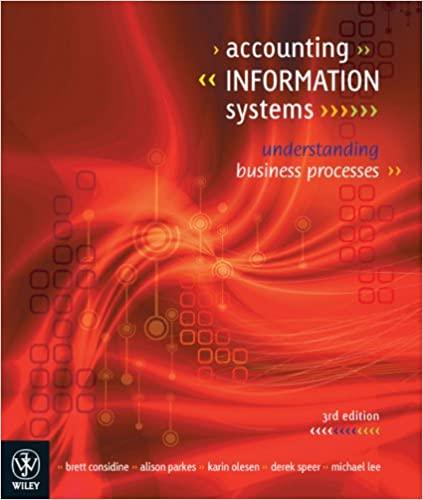Answered step by step
Verified Expert Solution
Question
1 Approved Answer
During YR01 and YR02, Macys Inc. had the following sales-related activity. Date Event 6-1-YR01 Sold $400 of merchandise on account. This merchandise includes a one-year
During YR01 and YR02, Macys Inc. had the following sales-related activity. Date Event 6-1-YR01 Sold $400 of merchandise on account. This merchandise includes a one-year warranty expiring on 5-31-YR02. Under state law, all sales are subject to a 5% sales tax. 7-1-YR01 Sold $200 of merchandise on account. This merchandise includes a one-year warranty expiring on 6-30-YR02. In addition, the customer paid $60 for an extended warranty covering the one-year period 7-1-YR02 to 6-30-YR03. Under state law, all sales (including extended warranties) are subject to a 5% sales tax. 9-5-YR01 Received a billing of $20 from a third-party service organization for warranty repairs to merchandise sold on 6-1-YR01. 9-8-YR01 Paid the third-party billing received on 9-5-YR01. 12-23-YR01 Ordered merchandise under terms 2/10, n/60, FOB destination. The vendor charged a total of $100 for the merchandise (assume no sales tax is levied on this type of transaction). These goods were shipped on 12-26-YR01 (invoice date = 12-26-YR01) and delivered on 1-2-YR02. 12-28-YR01 Ordered merchandise under terms 2/10, n/60, FOB shipping point. The vendor charged a total of $50 for the merchandise (assume no sales tax is levied on this type of transaction). These goods were shipped on 12-30-YR01 (invoice date = 12-30-YR01) and delivered on 1-7-YR02. 12-31-YR01 Estimated that future warranty claims related to merchandise sold would be as follows: Claims related to Assurance Warranties = $40. Claims related to Service (extended) Warranties = $10. 12-31-YR01 As needed, recorded adjusting journal entry related to the extended warranty sold on 7-1-YR01. 1-2-YR02 Received $100 of merchandise ordered on 12-23-YR01. 1-4-YR02 Paid for the merchandise received on 1-2-YR02. 1-7-YR02 Received $50 of merchandise ordered on 12-28-YR01. 1-9-YR02 Paid for the merchandise received on 1-7-YR02 2-1-YR02 Remitted (paid) sales tax collections to the state government. 9-1-YR02 Sold $300 of merchandise on account. Under state law, all sales are subject to a 5% sales tax. This merchandise includes a one-year warranty expiring on 8-31-YR03. 11-12-YR02 Received a billing of $5 from a third-party service organization for extended warranty repairs to merchandise sold on 7-1-YR01. 11-14-YR02 Paid the third-party billing received on 11-12-YR02. 12-31-YR02 Estimated that future warranty claims related to merchandise sold would be as follows: Claims related to Assurance Warranties = $10. Claims related to Service (extended) Warranties = $6. 12-31-YR02 As needed, recorded adjusting journal entries. REQUIRED: Prepare formal journal entries to record these events and any necessary adjusting journal entries in the YR01 and YR02 accounting records. If no formal journal entry is needed for a given event, provide a brief explanation for the fact that no journal entry is needed. Assume that all general ledger accounts related to these events/transactions have a balance of zero (0) on 1-1-YR01. Company accounting policy is as follows: Company policy is to record adjusting journal entries once each year at year-end (December 31st). Reversing journal entries are not used by the company. Sales tax is recorded concurrently with sales revenue. Merchandise purchases are recorded using the Gross Method. The company uses a perpetual inventory system. For internal control reasons, company policy prohibits journal entries that include both cash and a nominal account. The companys yearend is December 31st
Step by Step Solution
There are 3 Steps involved in it
Step: 1

Get Instant Access to Expert-Tailored Solutions
See step-by-step solutions with expert insights and AI powered tools for academic success
Step: 2

Step: 3

Ace Your Homework with AI
Get the answers you need in no time with our AI-driven, step-by-step assistance
Get Started


